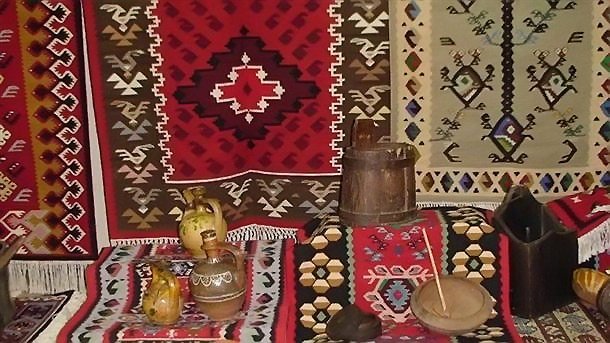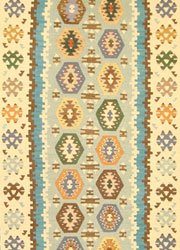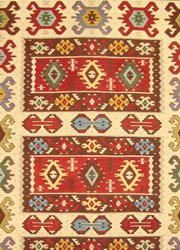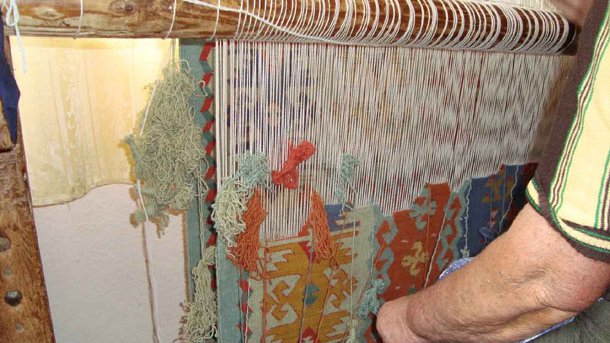 “The most typical pattern of the local carpets is the so-called ‘makaz”, which is two triangles joined at the top and shaped to look like a sand-glass,” Svetlana Ilieva, who descends from a generation of carpet weavers, and runs her own carpet weaving workshop in Sofia, told Radio Bulgaria. “It is bound to represent the male and female principle. In latter years designers and artists have joined us in our work, and that is why the symbolical meaning of the carpets is no longer a priority. Today the strife is somewhat more toward achieving harmony between hues and shapes. Another figure typical of the early period of the Chiprovtsi carpets is the ‘kanatitza’, which is also a combination of several triangles. It is believed to be endowed with magical powers, and to bring welfare and luck, and protect the family hearth. It is often present in the typical Chiprovtsi carpets. In later years the popular tree motif appeared, known as ‘karachka’, which in the local dialect means ‘a black-eyed bride”. It, too, is a combination of several triangles, but the general belief is that its symbols go back to the times of the Proto Bulgarians.”
“The most typical pattern of the local carpets is the so-called ‘makaz”, which is two triangles joined at the top and shaped to look like a sand-glass,” Svetlana Ilieva, who descends from a generation of carpet weavers, and runs her own carpet weaving workshop in Sofia, told Radio Bulgaria. “It is bound to represent the male and female principle. In latter years designers and artists have joined us in our work, and that is why the symbolical meaning of the carpets is no longer a priority. Today the strife is somewhat more toward achieving harmony between hues and shapes. Another figure typical of the early period of the Chiprovtsi carpets is the ‘kanatitza’, which is also a combination of several triangles. It is believed to be endowed with magical powers, and to bring welfare and luck, and protect the family hearth. It is often present in the typical Chiprovtsi carpets. In later years the popular tree motif appeared, known as ‘karachka’, which in the local dialect means ‘a black-eyed bride”. It, too, is a combination of several triangles, but the general belief is that its symbols go back to the times of the Proto Bulgarians.” 
© Photo: radiovidin.bnr.bg



© Photo: personal archive
The day of St. Tryphon (1 February old style, 14 February new style) is celebrated by vine growers, falconers and gardeners in Bulgaria. Trifon Zarezan comes around with vine pruning and wine drinking St. Tryphon is believed to help..
All Bulgarian masquerade games originate from the ancient rituals related to the birth of the sun around Christmas. With the adoption of Christianity, in order not to defile the newborn God, the custom was blurred. In the western..
The Roma community in Bulgaria is celebrating Vasilyevden /or Vasilitsa, Bango Vasili (literally the Lame Vasil)/, also known as the Roma New Year , reports the Amalipe Foundation. The Roma New Year combining in its traditions Christmas with St...
The day of St. Tryphon (1 February old style, 14 February new style) is celebrated by vine growers, falconers and gardeners in Bulgaria. Trifon..

+359 2 9336 661
